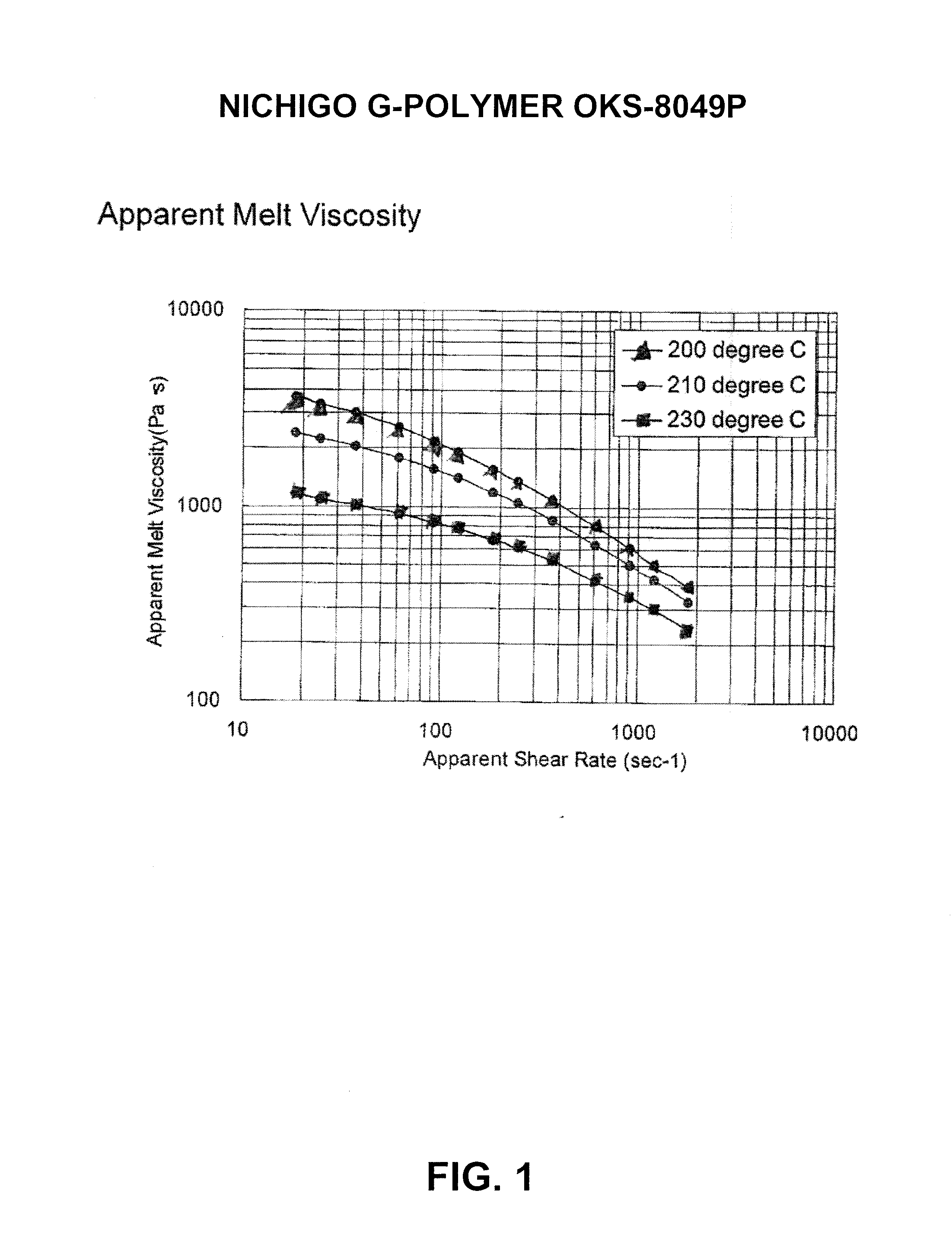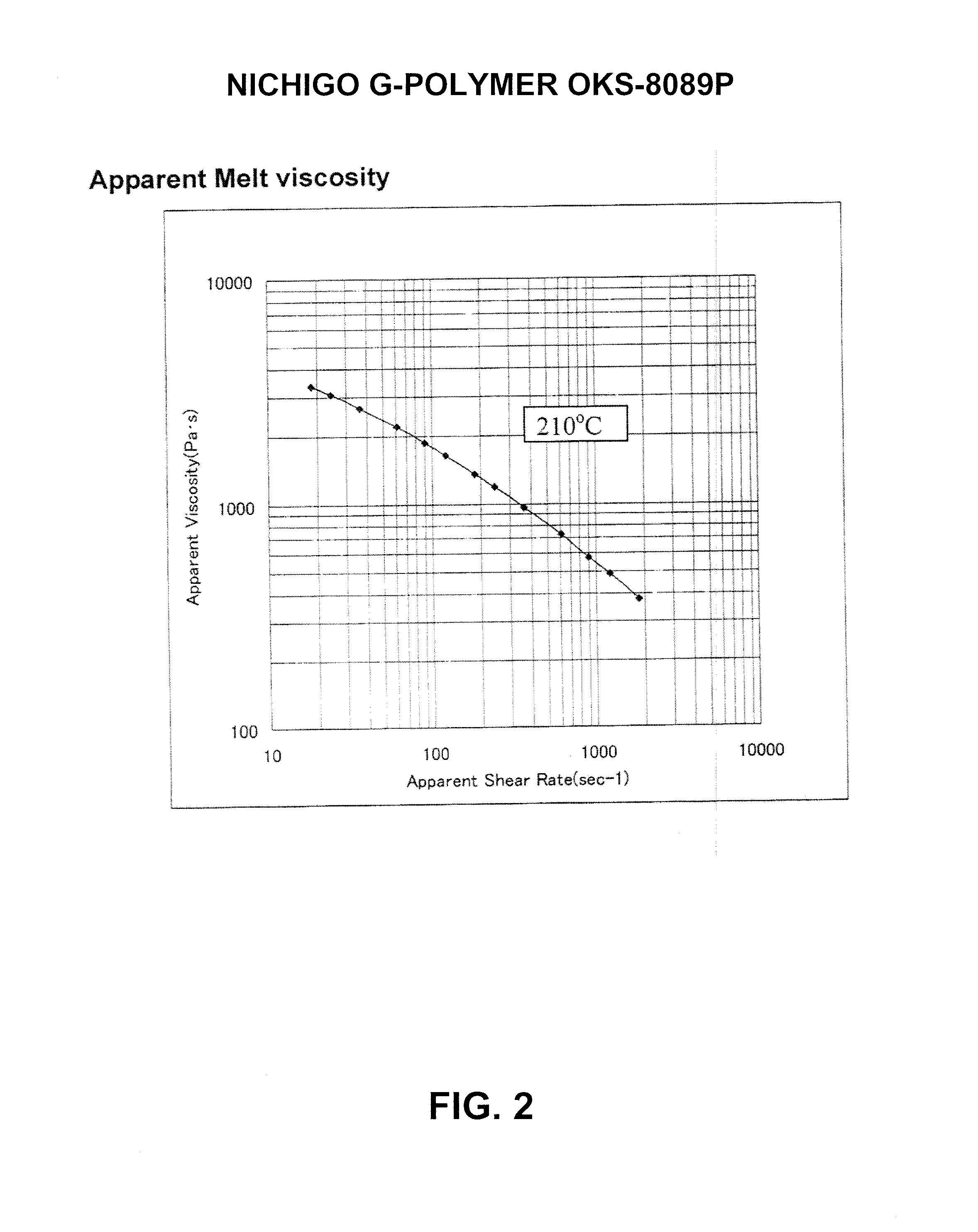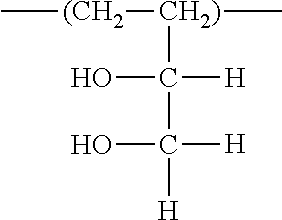Smokable thermoplastic casing
a thermoplastic and smoke-proof technology, applied in the field of thermoplastic films, can solve the problems of affecting the dimensional stability and uniformity of the thermoplastic casing, and affecting the smokiness of the plastic casing,
- Summary
- Abstract
- Description
- Claims
- Application Information
AI Technical Summary
Benefits of technology
Problems solved by technology
Method used
Image
Examples
example 1
Water and O2 Transmission
[0081]The samples tested for oxygen transmission rate, moisture vapor transfer rate (“MVTR”) and color transfer of liquid and gaseous smoke were as described below.
[0082]Three flat films, 1F, 2F, and 3F, hereof were made using resins comprising 20, 45 and 55 wt. % of NICHIGO G-POLYMER® OKS 8049LP(“OKS”) as described above, and 80, 55 and 45 wt. %, respectively, of nylon 6 / 66 copolymer made by DSM, a NOVAMID®. These sheets were formed into a tube and seamed with tape, stuffed with meat, and processed and smoked with both liquid and gaseous smoke.
[0083]Sample “NOJAX®,” a cellulose casing produced and sold by Viskase Companies, Inc., Darien, Ill. USA (registered trademark of Viskase Companies, Inc.), was used as a positive color control.
[0084]Sample “POLYJAX®,” a 100% polyamide casing produced and sold by Viskase Companies, Inc., Darien, Ill. USA (registered trademark of Viskase Companies, Inc.), was used as a negative color control.
[0085]Sample 1T contained 20...
example 2
Smoke Transference
[0095]All samples were stuffed with all meat frankfurter emulsions by hand and fainted into individual links. The links of sausages were processed as they would be in a commercial manufacturer's factory, using heat, humidity, and cook cycle times consistent with processing a meat emulsion product. During the processing cycle, some of the stuffed links were exposed to gaseous smoke and others to liquid smoke. Once the links were finished cooking, the casing was then mechanically slit and the released links were examined for L, a, b values.
[0096]The results of the L, a, b tests are shown in Table 5.
TABLE 5Smokable Casing Color DataLiquid smoke{circumflex over ( )}Gaseous smoke**SampleLabΔ E*LabΔ E*NOJAX ®56.0519.8922.7713.954.2320.6325.5316.3POLYJAX ®66.2913.7915.55 0.066.2313.9216.83 0.01F (20% OKS)58.4212.3624.6 N / A63.6813.4919.212F (45% OKS)56.2618.8926.16N / A58.0116.3523.583F(55% OKS)57.0818.4726.87N / A58.6816.9824.821T (20% OKS)63.8415.8818.524.463.3915.4418.49 3....
PUM
| Property | Measurement | Unit |
|---|---|---|
| melting point | aaaaa | aaaaa |
| melting point | aaaaa | aaaaa |
| wt. % | aaaaa | aaaaa |
Abstract
Description
Claims
Application Information
 Login to View More
Login to View More - R&D
- Intellectual Property
- Life Sciences
- Materials
- Tech Scout
- Unparalleled Data Quality
- Higher Quality Content
- 60% Fewer Hallucinations
Browse by: Latest US Patents, China's latest patents, Technical Efficacy Thesaurus, Application Domain, Technology Topic, Popular Technical Reports.
© 2025 PatSnap. All rights reserved.Legal|Privacy policy|Modern Slavery Act Transparency Statement|Sitemap|About US| Contact US: help@patsnap.com



